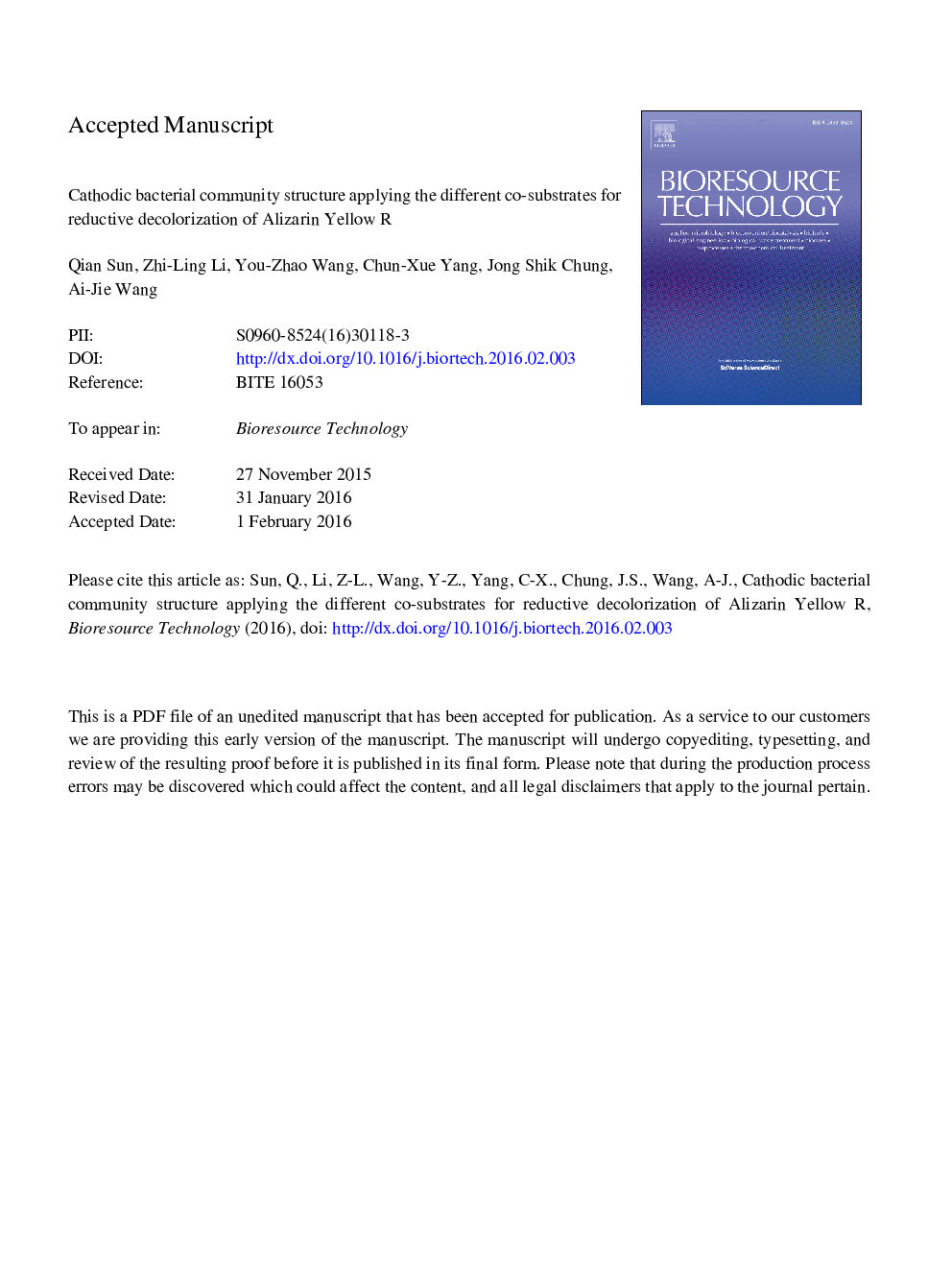| Article ID | Journal | Published Year | Pages | File Type |
|---|---|---|---|---|
| 679224 | Bioresource Technology | 2016 | 30 Pages |
Abstract
Selective enrichment of cathodic bacterial community was investigated during reductive decolorization of AYR fedding with glucose or acetate as co-substrates in biocathode. A clear distinction of phylotype structures were observed between glucose-fed and acetate-fed biocathodes. In glucose-fed biocathode, Citrobacter (29.2%), Enterococcus (14.7%) and Alkaliflexus (9.2%) were predominant, and while, in acetate-fed biocathode, Acinetobacter (17.8%) and Achromobacter (6.4%) were dominant. Some electroactive or reductive decolorization genera, like Pseudomonas, Delftia and Dechloromonas were commonly enriched. Both of the higher AYR decolorization rate (kAYRÂ =Â 0.46) and p-phenylenediamine (PPD) generation rate (kPPDÂ =Â 0.38) were obtained fed with glucose than acetate (kAYRÂ =Â 0.18; kPPDÂ =Â 0.16). The electrochemical behavior analysis represented a total resistance in glucose-fed condition was about 73.2% lower than acetate-fed condition. The different co-substrate types, resulted in alteration of structure, richness and composition of bacterial communities, which significantly impacted the performances and electrochemical behaviors during reductive decolorization of azo dyes in biocathode.
Related Topics
Physical Sciences and Engineering
Chemical Engineering
Process Chemistry and Technology
Authors
Qian Sun, Zhi-Ling Li, You-Zhao Wang, Chun-Xue Yang, Jong Shik Chung, Ai-Jie Wang,
